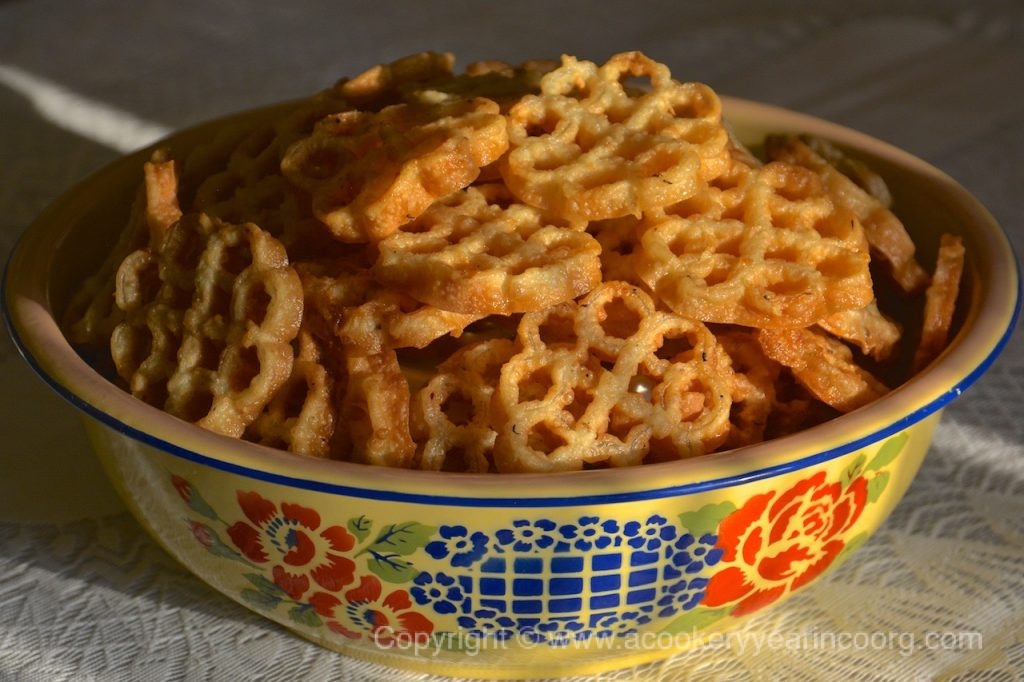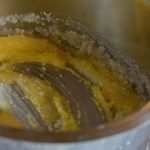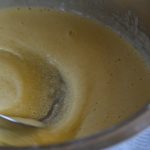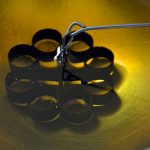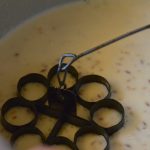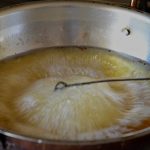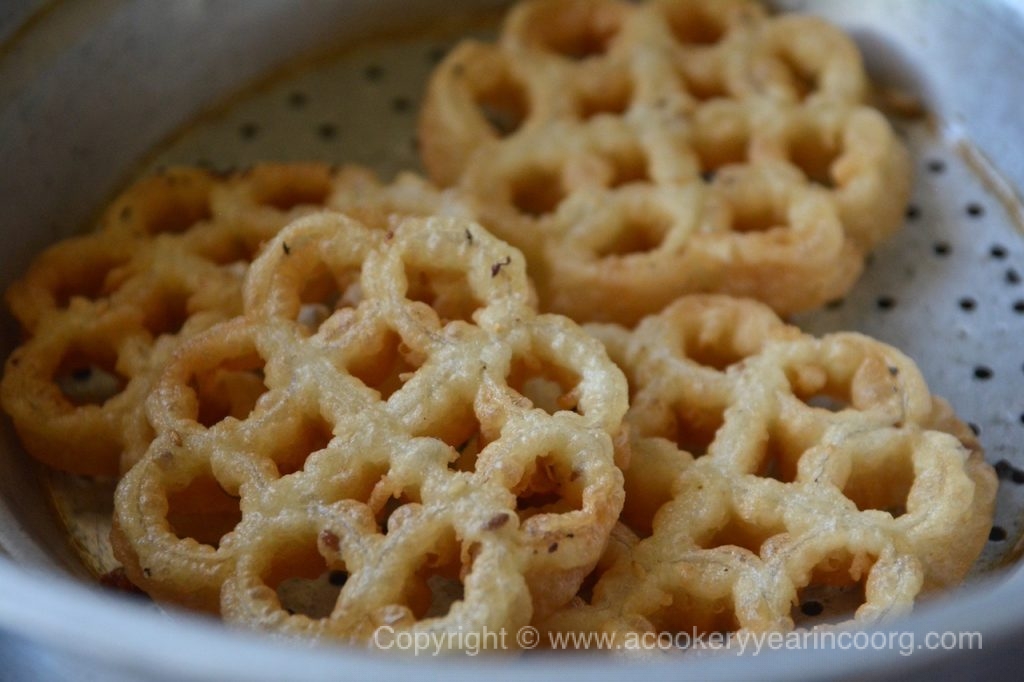What’s in a name? Rose cookie, rose de coque, Scandinavian rosette, beehive cookie, nan-e-panjereh, achappam…these are names from around the world for a light as air, barely there, confection of deep fried pastry. They all consist of a thin layer of batter formed on heated decorative moulds of brass, iron, aluminium or even copper. These cookies, with so much style and little real substance, are a true delight!
Often associated with festive occasions like Christmas in Scandinavia, or Chinese new year celebrations in Malaysia, rose cookies were something my grandmother made on a regular basis as an any time treat. Her recipe consisted of a lightly sweetened milk, egg, and flour batter with vanilla flavouring.
It takes a little practice to get the basic procedure right. But it’s definitely worth the effort, and the little heaps of mangled, scorched, “tries”! A good place to start is with a well seasoned iron that will release the batter easily.
More than anything, it requires patience. Grandmother would stand by the stove all afternoon, like some gentle metalsmith, dipping the rose cookie mould in batter (soft hiss), then oil (loud sizzle), repeating the actions in a steady rhythm, while the cookies piled up like rusty cogs.
In recent years, I’ve become rather fond of the Kerala version of rose cookies – achappam (acchu muruku). They’re made with rice flour instead of regular flour, and fresh coconut milk. Their subtle sweetness is complemented perfectly by savoury cumin, cardamom, and nutty sesame. They are delicious.
Give these a try!
Achappam
Rose cookies
- 500 gms rice, soaked for three hours and drained
- 1 coconut, grated
- 2 eggs
- 250 gms sugar
- 1/2 tsp salt
- 3 tsps black or brown sesame
- 1 tsp powdered cardamom
- 2 tsp cumin
- Oil for deep frying (use coconut oil for an even more distinctive flavour!)
Drain the rice and spread it over a cloth. When it feels dry to the touch, grind it to a fine powder. Sieve to remove any large bits. You should have a free-flowing but moist rice flour.
Grind the grated coconut with half a cup of cold water and extract coconut milk by wringing the paste in a piece of muslin or cheesecloth. Set aside this thick extract, then repeat the process, adding another 1/2 – 3/4 cup of cold water to the coconut.This extract will be thinner. Do not mix the two.
Stir the eggs and sugar together with a spoon, mixing without incorporating too much air. When the mixture is creamy and the sugar has mostly dissolved, add the thick coconut milk, tip in the flour, then stir in as much of the thin coconut milk as you need to make a smooth, pourable batter. I’ve found that even a fairly thin batter works just fine, so don’t worry if you’ve added too much liquid.
Add the salt, sesame, cardamom, and cumin and mix thoroughly.
Have a kadhai or wok ready with oil for deep frying. Let your cookie iron heat through in the oil and shake it clear of any drips*.
Quickly dip it into the batter. Be careful not to submerge it all the way, otherwise the overflow at the top will make the cookie stick to the mould.
Again, shake off any drips, then move it quickly back to the pan and suspend the iron in the hot oil.
There seem to be two techniques used to get the rose cookies off the iron. One is to bob the iron gently up and down in the oil, so the cookie floats free when cooked. It’s then flipped over and given a few seconds more before draining. I think this works well with a thinner batter.
The second way, is to gauge the “doneness” of the cookie before removing it from the heat and carefully pushing it off the iron with the tip of a knife or a chopstick.
Lift the cookies out gently with a slotted spatula, shaking off any excess oil.
Drain them on absorbent paper with their open side facing down. They will crisp up on cooling.
Keep going!
Makes approximately 75 cookies.
Well, whatever the name of the rose cookie, there’s no mystery here – they would definitely taste as sweet! 😉
* Rest the iron in the hot oil for 8-10 seconds each time before you dip it in the batter.

